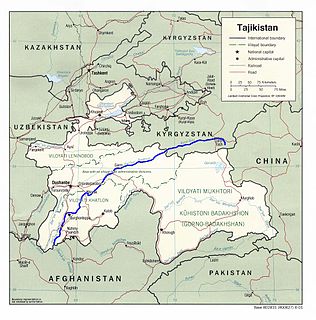| Part of a series on |
| Economics |
|---|
A missing market is a situation in microeconomics where a competitive market allowing the exchange of a commodity would be Pareto-efficient, but no such market exists.
| Part of a series on |
| Economics |
|---|
A missing market is a situation in microeconomics where a competitive market allowing the exchange of a commodity would be Pareto-efficient, but no such market exists.
A variety of factors can lead to missing markets:
A classic example of a missing market is the case of an externality like pollution, where decision makers are not responsible for some of the consequences of their actions. When a factory discharges polluted water into a river, that pollution can hurt people who fish in or get their drinking water from the river downstream, but the factory owner may have no incentive to consider those consequences.
Coordination failure can also prevent market formation. Again considering the pollution example, downstream residents might seek to be paid by the factory owner who pollute their water, but because of the free rider problem it may be difficult to coordinate.
Another barrier to pollution markets could be technology. If the river has several factories along its banks, it may be difficult or impossible to monitor which factory is responsible for downstream pollution.
High transaction costs might also deter market formation. It may be the case that both sides could benefit from an exchange of goods, but that setting up such an exchange is prohibitively expensive.
Markets can also be missing if there is a failure of trust or information. In non zero-sum interactions, it is possible that the Nash Equilibrium for individuals acting independently will be sub-optimal, in that both parties could benefit from cooperating, but on their own will choose not to. An example could be a shortage in footwear, where one person would like to open a factory to make shoes, and the other would like to produce socks, but because they are complementary commodities, neither has incentive to start producing unless he knows that the other will do the same (see also: prisoner's dilemma). The same applies to alternative automotive fuels: few filling station owners will be interested in offering the fuel until alternate-fuel cars are on the road, but people will not buy alternate-fuel cars until filling stations exist to service them.
In many cases of missing markets, it may be possible for the government or another actor to create circumstances that make market exchange possible. In the case of pollution, one popular solution is for the government to assign property rights in order to allow Coase Bargaining. In cases of information failure, futures markets can help to signal willingness to cooperate. An ownership solution is for one party to integrate into both activities, thereby internalizing the benefits, or to use the surplus generated on one side of the market to subsidize transactions on the other (see two sided markets).

Pollution is the introduction of contaminants into the natural environment that cause adverse change. Pollution can take the form of any substance or energy. Pollutants, the components of pollution, can be either foreign substances/energies or naturally occurring contaminants. Although environmental pollution can be caused by natural events, the word pollution generally implies that the contaminants have an anthropogenic source – that is, a source created by human activities. Pollution is often classed as point source or nonpoint source pollution. In 2015, pollution killed 9 million people worldwide.
Emissions trading is a market-based approach to controlling pollution by providing economic incentives for reducing the emissions of pollutants. The concept is also known as cap and trade (CAT) or emissions trading scheme (ETS). Carbon emission trading for CO2 and other greenhouse gases has been introduced in China, the European Union and other countries as a key tool for climate change mitigation. Other schemes include sulfur dioxide and other pollutants.
Environmental economics is a sub-field of economics concerned with environmental issues. It has become a widely studied subject due to growing environmental concerns in the twenty-first century. Environmental economics "undertakes theoretical or empirical studies of the economic effects of national or local environmental policies around the world. ... Particular issues include the costs and benefits of alternative environmental policies to deal with air pollution, water quality, toxic substances, solid waste, and global warming."

In economics, an externality or external cost is an indirect cost or benefit to an uninvolved third party that arises as an effect of another party's activity. Externalities can be considered as unpriced goods involved in either consumer or producer market transactions. Air pollution from motor vehicles is one example. The cost of air pollution to society is not paid by either the producers or users of motorized transport to the rest of society. Water pollution from mills and factories is another example. All consumers are all made worse off by pollution but are not compensated by the market for this damage. A positive externality is when an individual's consumption in a market increases the well-being of others, but the individual does not charge the third party for the benefit. The third party is essentially getting a free product. An example of this might be the apartment above a bakery receiving the benefit of enjoyment from smelling fresh pastries every morning. The people who live in the apartment do not compensate the bakery for this benefit.

In neoclassical economics, market failure is a situation in which the allocation of goods and services by a free market is not Pareto efficient, often leading to a net loss of economic value. Market failures can be viewed as scenarios where individuals' pursuit of pure self-interest leads to results that are not efficient – that can be improved upon from the societal point of view. The first known use of the term by economists was in 1958, but the concept has been traced back to the Victorian philosopher Henry Sidgwick. Market failures are often associated with public goods, time-inconsistent preferences, information asymmetries, non-competitive markets, principal–agent problems, or externalities.
A subsidy or government incentive is a form of financial aid or support extended to an economic sector generally with the aim of promoting economic and social policy. Although commonly extended from the government, the term subsidy can relate to any type of support – for example from NGOs or as implicit subsidies. Subsidies come in various forms including: direct and indirect.
An ecotax is a tax levied on activities which are considered to be harmful to the environment and is intended to promote environmentally friendly activities via economic incentives. Such a policy can complement or avert the need for regulatory approaches. Often, an ecotax policy proposal may attempt to maintain overall tax revenue by proportionately reducing other taxes ; such proposals are known as a green tax shift towards ecological taxation. Ecotaxes address the failure of free markets to consider environmental impacts.
The twelve leverage points to intervene in a system were proposed by Donella Meadows, a scientist and system analyst who studied environmental limits to economic growth.
In economic terms, electricity is a commodity capable of being bought, sold, and traded. An electricity market, also power exchange or PX, is a system enabling purchases, through bids to buy; sales, through offers to sell. Bids and offers use supply and demand principles to set the price. Long-term contracts are similar to power purchase agreements and generally considered private bi-lateral transactions between counterparties.
A Pigovian tax is a tax on any market activity that generates negative externalities. The tax is normally set by the government to correct an undesirable or inefficient market outcome, and does so by being set equal to the external marginal cost of the negative externalities. In the presence of negative externalities, social cost includes private cost and external cost caused by negative externalities. This means the social cost of a market activity is not covered by the private cost of the activity. In such a case, the market outcome is not efficient and may lead to over-consumption of the product. Often-cited examples of such negative externalities are environmental pollution, and increased public healthcare costs associated with tobacco and sugary drink consumption.
Free-market environmentalism argues that the free market, property rights, and tort law provide the best means of preserving the environment, internalizing pollution costs, and conserving resources.
A theory of capitalism describes the essential features of capitalism and how it functions. The history of various such theories is the subject of this article.
Friends of the Earth, Inc. v. Laidlaw Environmental Services, Inc., 528 U.S. 167 (2000), was a United States Supreme Court case that addressed the law regarding standing to sue and mootness.

The Vakhsh, also known as the Surkhob, in north-central Tajikistan, and the Kyzyl-Suu, in Kyrgyzstan, is a Central Asian river, and one of the main rivers of Tajikistan. It is a tributary of the Amu Darya river.

A market is a composition of systems, institutions, procedures, social relations or infrastructures whereby parties engage in exchange. While parties may exchange goods and services by barter, most markets rely on sellers offering their goods or services to buyers in exchange for money. It can be said that a market is the process by which the prices of goods and services are established. Markets facilitate trade and enable the distribution and allocation of resources in a society. Markets allow any tradeable item to be evaluated and priced. A market emerges more or less spontaneously or may be constructed deliberately by human interaction in order to enable the exchange of rights of services and goods. Markets generally supplant gift economies and are often held in place through rules and customs, such as a booth fee, competitive pricing, and source of goods for sale.
The Commonize Costs–Privatize Profits Game is a concept developed by the ecologist Garrett Hardin to describe a "game" widely played in matters of resource allocation. The concept is Hardin's interpretation of the closely related phenomenon known as the tragedy of the commons, and is referred to in political discourse as "privatizing profits and socializing losses."
In environmental law and policy, market-based instruments (MBIs) are policy instruments that use markets, price, and other economic variables to provide incentives for polluters to reduce or eliminate negative environmental externalities. MBIs seek to address the market failure of externalities by incorporating the external cost of production or consumption activities through taxes or charges on processes or products, or by creating property rights and facilitating the establishment of a proxy market for the use of environmental services. Market-based instruments are also referred to as economic instruments, price-based instruments, new environmental policy instruments (NEPIs) or new instruments of environmental policy.

Pollution is an environmental issue in Canada. It has posed health risks to the Canadian population and is an area of concern for Canadian lawmakers. Air, water and soil pollution as well as the health effects associated with these three types of pollution, are prominent points of contention in modern Canadian society.

Nonpoint source (NPS) water pollution regulations are environmental regulations that restrict or limit water pollution from diffuse or nonpoint effluent sources such as polluted runoff from agricultural areas in a river catchments or wind-borne debris blowing out to sea. In the United States, governments have taken a number of legal and regulatory approaches to controlling NPS effluent. Nonpoint water pollution sources include, for example, leakage from underground storage tanks, storm water runoff, atmospheric deposition of contaminants, and golf course, agricultural, and forestry runoff. Nonpoint sources are the most significant single source of water pollution in the United States, accounting for almost half of all water pollution, and agricultural runoff is the single largest source of nonpoint source water pollution. This water pollution has a number of detrimental effects on human health and the environment. Unlike point source pollution, nonpoint source pollution arises from numerous and diverse sources, making identification, monitoring, and regulation more complex.
Fair river sharing is a kind of a fair division problem in which the waters of a river has to be divided among countries located along the river. It differs from other fair division problems in that the resource to be divided - the water - flows in one direction - from upstream countries to downstream countries. To attain any desired division, it may be required to limit the consumption of upstream countries, but this may require to give these countries some monetary compensation.